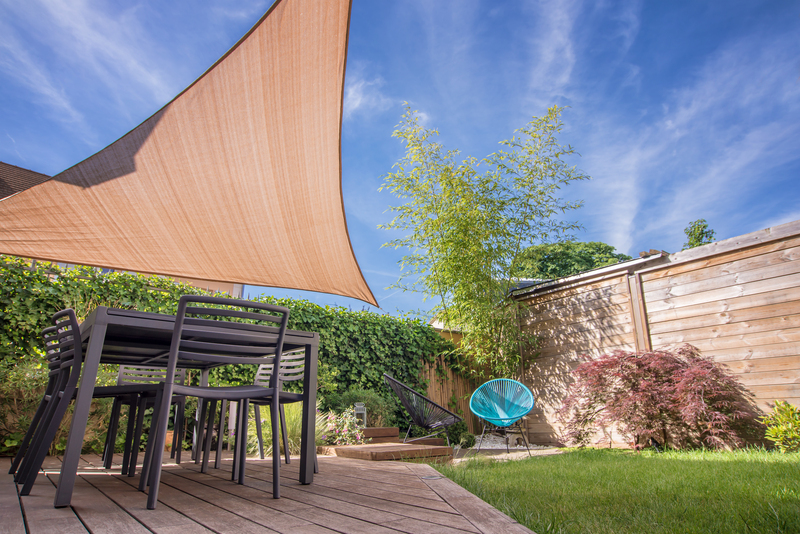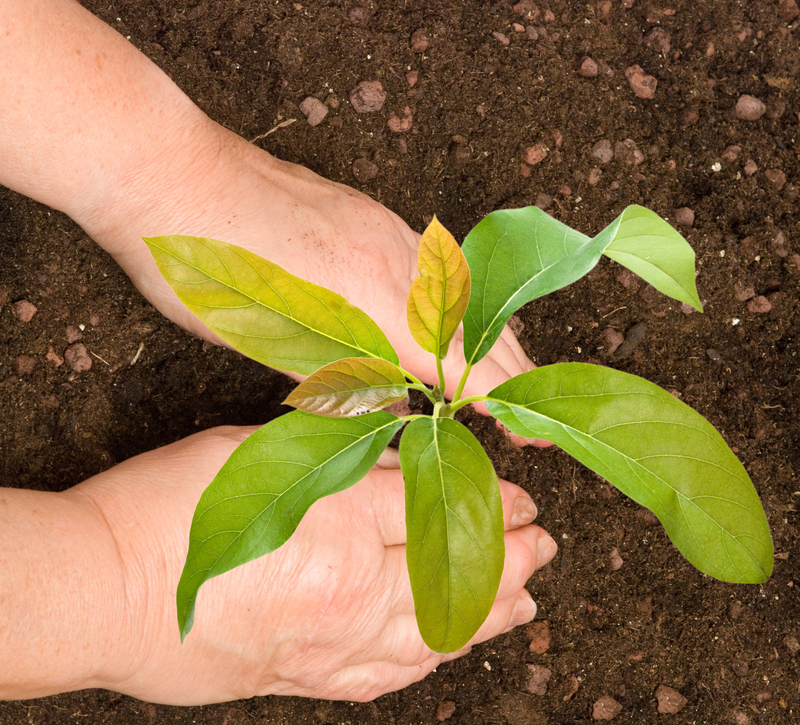The Art and Science of Orchid Care: What You Need to Know
Posted on 28/05/2025
The Art and Science of Orchid Care: What You Need to Know
Orchids captivate gardeners and plant lovers alike for their stunning blooms and fascinating diversity. But nurturing these exotic masterpieces requires more than the occasional watering. Whether you're a seasoned enthusiast or an eager beginner, understanding the art and science of orchid care is the key to flourishing, vibrant plants. This in-depth guide covers everything you need to know to help your orchids thrive, from choosing the right species to troubleshooting common problems. Read on to unlock the secrets of successful orchid cultivation!
Understanding Orchids: Unveiling Their Mystique
Orchids belong to one of the largest plant families on earth--the Orchidaceae. With over 25,000 different species and upwards of 100,000 hybrids, these resilient plants have adapted to environments across the globe. However, most popular varieties in homes or offices are epiphytes, meaning they grow attached to trees rather than in soil.
- Phalaenopsis (Moth Orchid): The beginner's favorite, known for its long-lasting blooms.
- Cattleya: Renowned for their fragrance and large flowers.
- Dendrobium: Hardy, adaptable, and popular for both their beauty and durability.
- Oncidium (Dancing Lady): Famous for abundant sprays of small colorful flowers.
- Vanda: Loved for their striking, vibrant flowers but require more attention.
Every orchid variety has its unique care requirements, but understanding their natural habitat helps to replicate conditions that lead to robust growth and brilliant blooms.

The Science of Optimal Orchid Care: Essential Elements
1. Light: The Foundation of Healthy Orchids
Light is integral to orchid health, influencing not only blooming but also the general vigor of the plant. Too much light scorches the leaves; too little inhibits flower production.
- Phalaenopsis: Prefer medium, indirect light (think east-facing windows).
- Cattleyas & Vandas: Require brighter, filtered sunlight.
- Dendrobiums: Adapt to a range of lighting but don't flourish in deep shade.
Your plant will communicate its needs -- yellow leaves often indicate excessive sunlight, while dark green, floppy leaves suggest insufficient light.
2. Watering: Avoiding the Perils of Overwatering
Orchids are notorious for their sensitivity to watering routines. In the wild, epiphytic orchids absorb moisture from the rain and the humid air.
- Never let your orchid sit in water; roots need air as much as they need moisture.
- Water thoroughly, then allow the potting medium to dry out slightly before watering again.
- Watering frequency depends on the season, humidity, pot size, and orchid species, but a common rule is every 7-10 days.
- Morning watering is best to allow leaves and crowns to dry before nightfall, reducing the risk of rot.
Tip: Always use tepid, distilled, or rainwater, as softened tap water can be harmful to your orchid.
3. Humidity: Orchids & the Need for Moist Air
Most orchids flourish in humidity levels between 40-70%. Modern indoor environments, especially during winter, can be too dry.
- Increase humidity with a humidity tray -- a shallow dish filled with pebbles and water beneath your orchid's pot.
- Use a room humidifier or group plants together to boost ambient moisture.
- Misting can supplement humidity but beware of consistent wet foliage, which encourages disease.
Checking your orchid's aerial roots is a helpful habit--they should appear silvery and plump, not shriveled or parched.
4. Potting & Media: Home Sweet Home for Roots
Replicating the orchid's native environment is crucial. Orchids do not thrive in standard potting soil. Instead, use specialized orchid mixes comprised of bark, sphagnum moss, perlite, and coconut husks.
- Bark-based mixes: Offer excellent drainage and airflow, ideal for most epiphytic varieties.
- Sphagnum moss: Retains more moisture, suitable for mini-orchids and seedlings.
- Always choose clear plastic pots or containers with multiple drainage holes to monitor root health.
- Repot every 1-3 years or when the medium begins to break down or roots outgrow their container.
Healthy orchid roots are usually firm and green or white after watering.
5. Feeding & Fertilizing: Fuel for Spectacular Blooms
Orchids require far less fertilizer than most houseplants. Over-fertilization will damage their delicate roots.
- Apply a balanced, diluted orchid fertilizer (20-20-20) every two weeks during active growth (spring and summer).
- Reduce feeding during autumn and winter when growth slows.
- Flush pots monthly with clear water to prevent salt buildup.
Remember the golden rule: "Weakly, weekly"--always dilute fertilizer more than package recommendations suggest.
The Artistic Touch: Styling, Pruning & Displaying Orchids
The Aesthetics of Orchid Display
Showcasing your orchid is where artistry meets horticultural science. Choose pots and stands that complement both your decor and orchid's needs. Consider:
- Transparent containers for monitoring root health and maximizing light exposure.
- Decorative cachepots -- just ensure they don't trap excess water.
- Grouping various orchid varieties to create a lush, layered look.
Pruning and Deadheading for Longevity
Pruning spent flower spikes encourages reblooming and redirects energy to growth.
- For Phalaenopsis, cut the spike just above a visible node to potentially stimulate a side shoot.
- Remove dead, soft, or yellow roots during repotting.
- Always use sterilized tools to prevent disease spread.
Upkeep not only sustains your orchid's health but enhances its graceful appearance.
Common Orchid Problems and Solutions
1. Disease and Pest Control
Fungal and bacterial diseases can rapidly turn a thriving orchid into ailing one. Common culprits include root rot, botrytis, and bacterial soft rot, which thrive in wet, poorly ventilated conditions.
- Maintain air circulation by using fans or cracked windows.
- Spot-treat infections promptly with fungicides or bactericides.
- Immediately remove affected plant parts.
Pests such as scale insects, aphids, and spider mites are also frequent visitors. A strong spray of water or neem oil can help manage these infestations. Regular inspection is crucial for early detection.
2. Why Aren't My Orchids Flowering?
Failure to bloom is a common frustration. Causes may include:
- Too little light--ornamental foliage with no blooms
- Improper watering routines
- Lack of seasonal temperature fluctuation--especially for orchids that require cooler nights to trigger flowering
- Overfeeding or salt buildup in the growing medium
Adjust light, review watering, and mimic natural seasonal changes to encourage flowering.
Advanced Orchid Care: Beyond the Basics
Propagation Techniques
Orchid propagation is an exciting way to expand your collection. Methods include division (for sympodial orchids like Cattleya and Dendrobium), keiki (baby plant) growth (common with Phalaenopsis), and expert-level seed germination--which requires sterile lab conditions.
Bloom Forcing and Reblooming
Applying a gentle drop in nighttime temperature for a few weeks can trigger many orchids to initiate flower spikes. This manual mimicry of their natural environment is crucial for some reluctant varieties.

Frequently Asked Questions About Caring for Orchids
How often should I repot my orchid?
Most orchids benefit from repotting every 1 to 3 years, depending on the breakdown of their media and the health of their roots.
Can orchids grow indoors?
Absolutely! With the right light, humidity, and care, orchids can thrive in almost any indoor environment. Choose species best-suited to your conditions, like Phalaenopsis for lower light settings.
How do I get my orchid to bloom again?
Ensure you're providing adequate light, rest periods, and a gentle drop in nighttime temperature. After flowering, maintain proper care, prune old spikes as needed, and be patient--some orchids take months between blooming cycles.
What should healthy orchid roots look like?
They should be white or green, plump, and firm. Brown, mushy roots are a sign of overwatering or decay and should be trimmed back during repotting.
Conclusion: The Joy of Mastering Orchid Care
From mastering the balance of light and water to creating beautiful displays, the art and science of orchid care is a rewarding journey. By understanding both the scientific needs and the aesthetic potential of these plants, you'll cultivate a collection that brings elegance, beauty, and satisfaction for years to come.
Whether you're entranced by the elegant Moth Orchid or dazzled by the exotic Vanda, follow these fundamental principles, and you'll soon unravel the wonderful mysteries of orchid care -- turning every bloom into a triumph of horticultural artistry.
- Observe your orchids regularly for signs of health or distress.
- Enjoy experimenting with display and new hybrids as your expertise grows.
- Share your passion with others--joining local orchid societies can unlock even more knowledge and camaraderie.
Happy growing! May your journey into the science and art of orchid care be as beautiful and rewarding as the orchids themselves.

